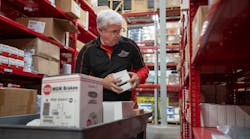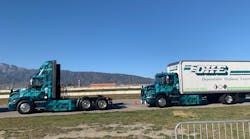The trucking world is generally far different than the consumer universe. A frequently cited example by original equipment manufacturers is that fleet executives do not buy new trucks because they want to, but instead because it is required in order to operate a successful business.
Yet the expectations of those involved in the freight transportation industry are being “shaped by other [consumer] experiences,” said Josef Kory, senior vice president of parts for Navistar International Corp.
Kory was among numerous Navistar executives and dealers that took part in a media briefing and workshop last week in Colorado to unveil the Vision 2025 plan aimed at becoming a more “customer-center, innovative brand.”
Kory noted that consumers expect immediate shipping of clothes and other items, even though they usually “have no single reason they need them that fast.”
Online shopping is certain to continue growing in both the consumer and business sectors, so companies like Navistar are preparing to deliver parts faster than ever to meet expectations and keep up with aftermarket competition, Kory said.
One way companies will likely accomplish that feat is to expand the total number of distribution centers, with each one generally smaller in size and located closer to key customer bases.
As part of Navistar’s own efforts, it is opening a new parts distribution center later this month near Memphis, TN. The proximity to the FedEx cargo hub means that parts ordered as late as 11 p.m. eastern time can be delivered by early the following morning.
Kory also said the use of dedicated transportation will increase, and there will be less reliance on more traditional less-than-truckload shipping to ensure critical parts get to customers as quickly as possible to limit unplanned downtime.
The need to get parts to dealers and other maintenance shops faster will lead to “much different deliveries” in the coming years, added Kory. For example, he said Navistar is conducting a pilot program with the ride share company Lyft to get critical parts from distribution centers to dealers and customers.
At the same time, parts inventory systems will continue to advance with artificial intelligence and other technologies. That will allow more “predictive stocking,” rather than leaning on historical demand for decisions.
Likewise, predictive maintenance will become the norm, allowing dealers to schedule repairs to replace key components before they break down and cause of unplanned downtime. Additionally, Kory said all equipment manufacturers will utilize 3-D printers, “especially on low-demand, hard to tool-up parts."
Even the higher adoption rates of advanced safety technologies such as collision mitigation systems will lead to a change.
“This will shift the replacement parts business away from crash parts and cheap metal parts and more to electric sensors and cameras,” he said.




